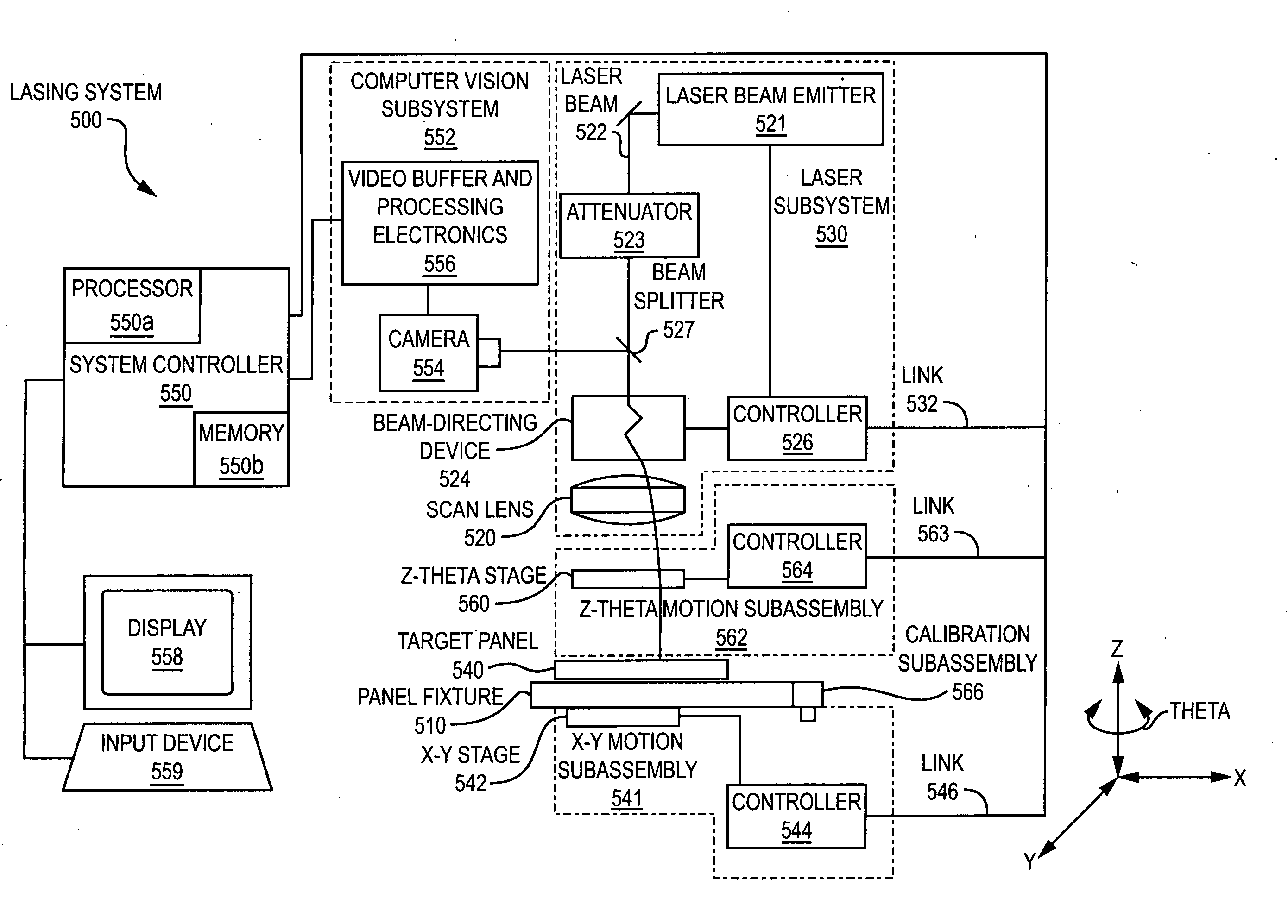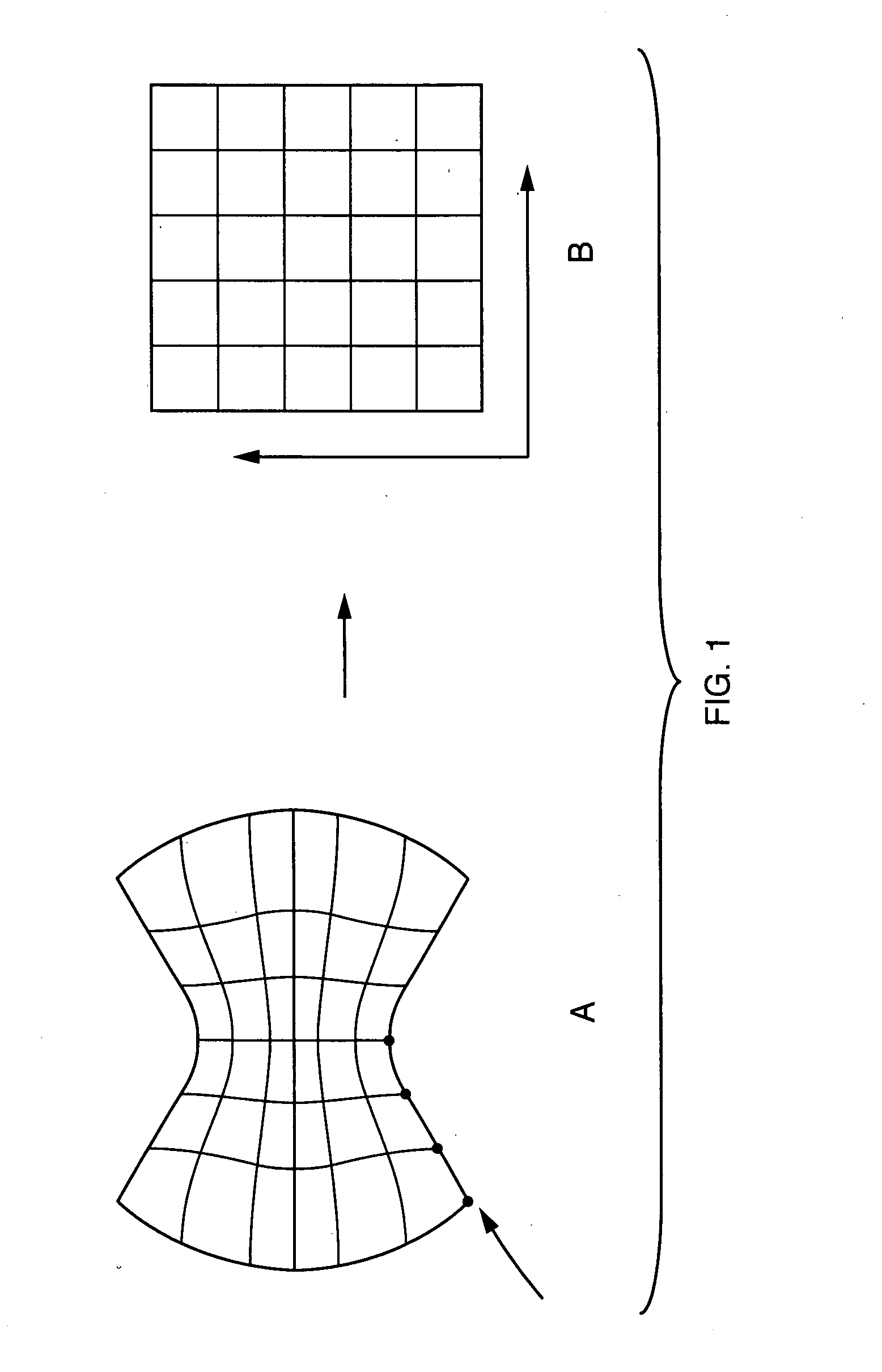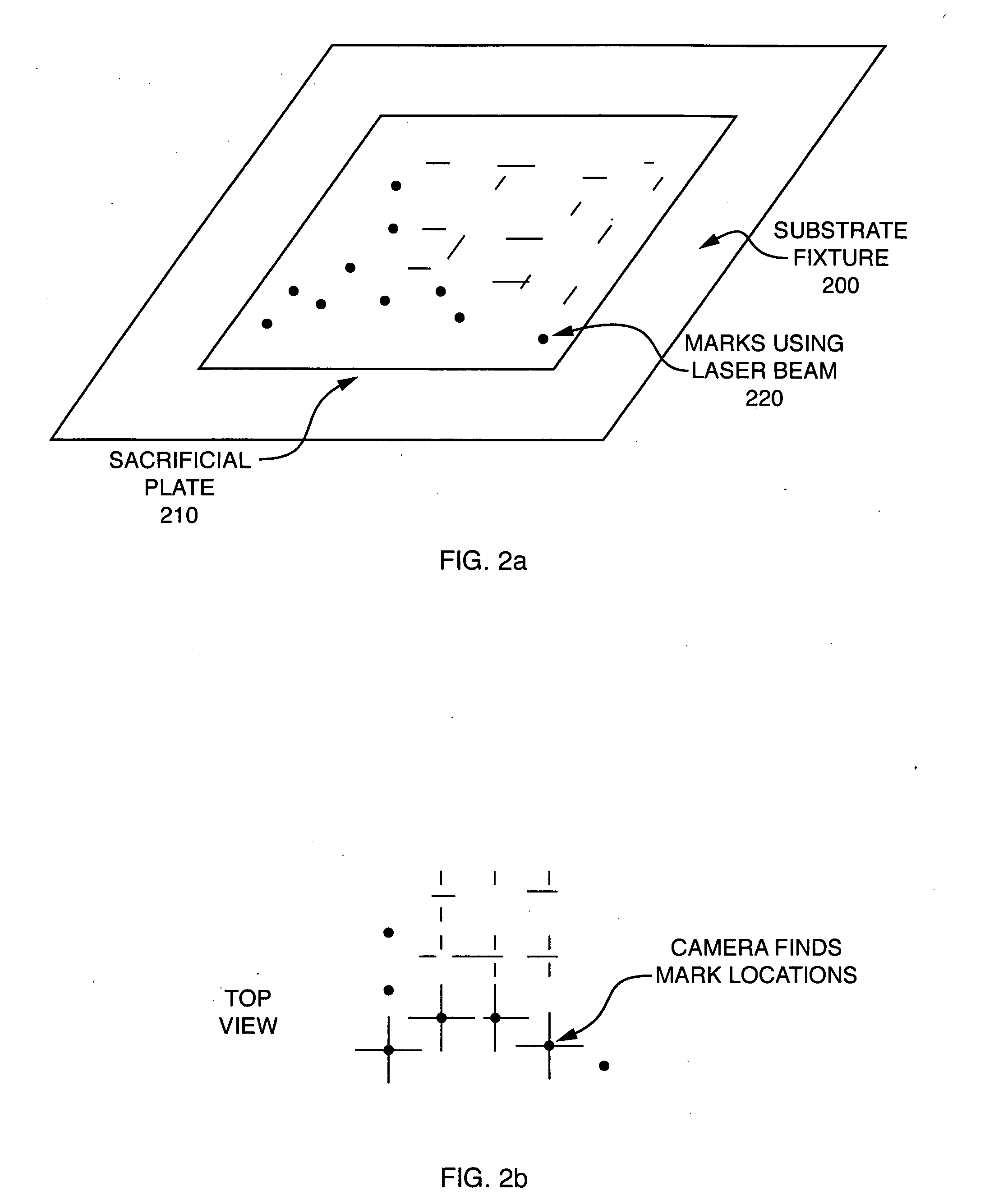Laser trim motion, calibration, imaging, and fixturing techniques
a laser beam and motion technology, applied in the field of energy beam scanning, can solve the problems of /b> being typically in a distorted pattern, laser beam and camera not coaxial, pin cushion-type field pattern, etc., and achieve the effect of optimizing lasing procedures
- Summary
- Abstract
- Description
- Claims
- Application Information
AI Technical Summary
Benefits of technology
Problems solved by technology
Method used
Image
Examples
Embodiment Construction
[0078] Embodiments of the present invention enable calibration of a vision subsystem and / or a laser beam in a lasing system without the use of a sacrificial plate or a reference grid or plate, and without operator intervention and in a substantially automated fashion. Planarization of the probe card and the surface of the work piece is enabled with a high degree of accuracy, and in a less cumbersome manner relative to conventional techniques. Proper alignment of probe card tips with circuit probe pads can be achieved more quickly and more easily. Likewise, accurate alignment of circuits or circuit elements on a panel or other substrate without damage to circuits or elements on the underside of the substrate and / or without the need to rotate the substrate is enabled. Also, efficient lasing of different circuits laid out on a single substrate with different orientations is enabled. In a more general sense, the disclosed techniques can be employed to reduce overall lasing time for proc...
PUM
| Property | Measurement | Unit |
|---|---|---|
| angle | aaaaa | aaaaa |
| diameter | aaaaa | aaaaa |
| wavelength | aaaaa | aaaaa |
Abstract
Description
Claims
Application Information
 Login to View More
Login to View More - R&D
- Intellectual Property
- Life Sciences
- Materials
- Tech Scout
- Unparalleled Data Quality
- Higher Quality Content
- 60% Fewer Hallucinations
Browse by: Latest US Patents, China's latest patents, Technical Efficacy Thesaurus, Application Domain, Technology Topic, Popular Technical Reports.
© 2025 PatSnap. All rights reserved.Legal|Privacy policy|Modern Slavery Act Transparency Statement|Sitemap|About US| Contact US: help@patsnap.com



